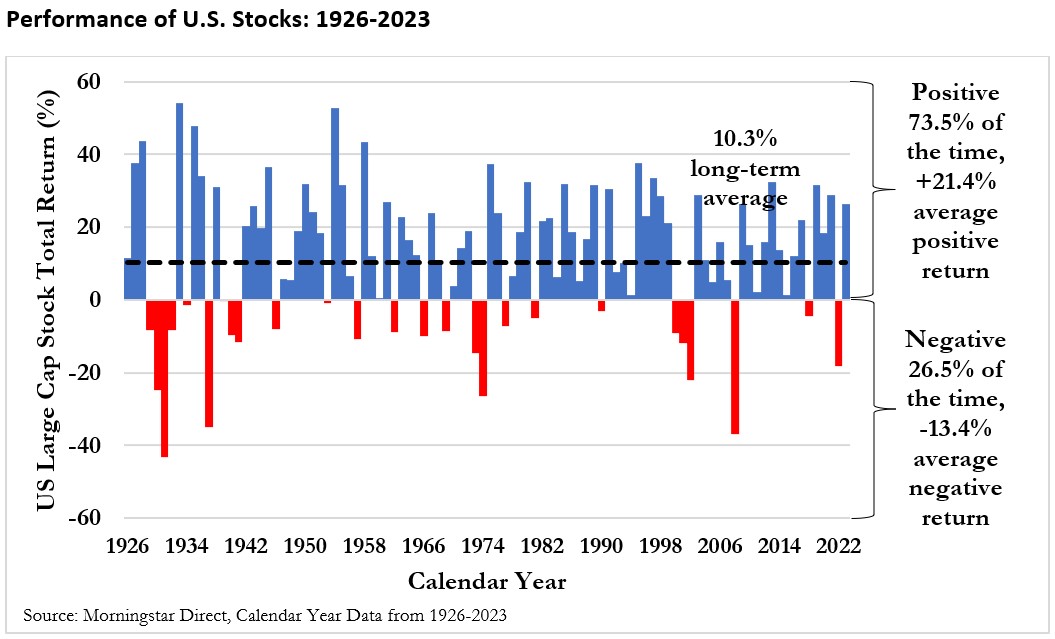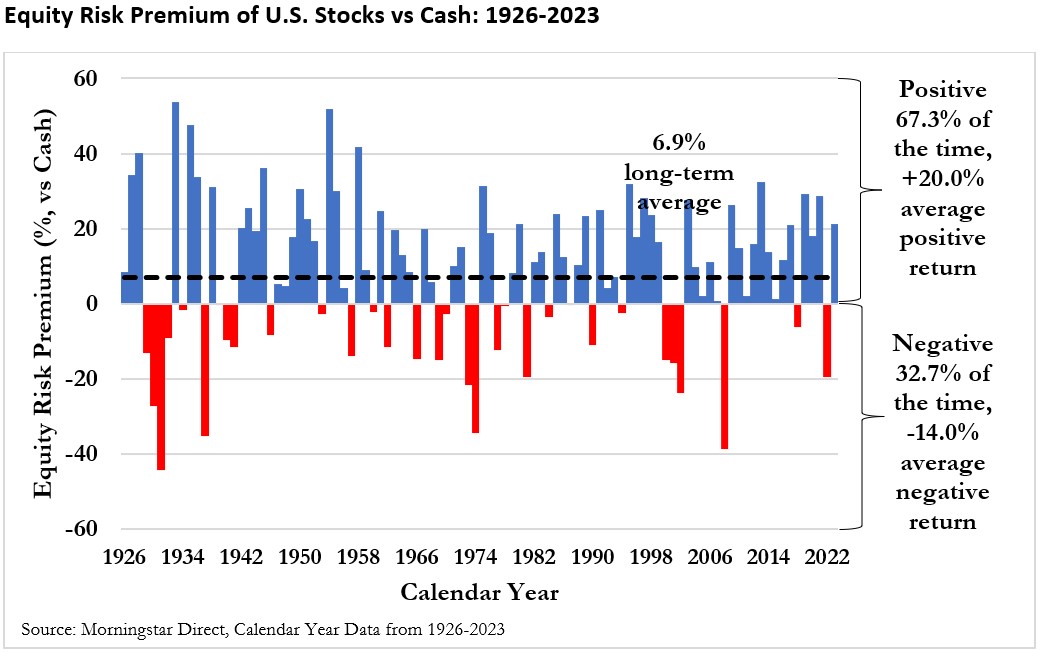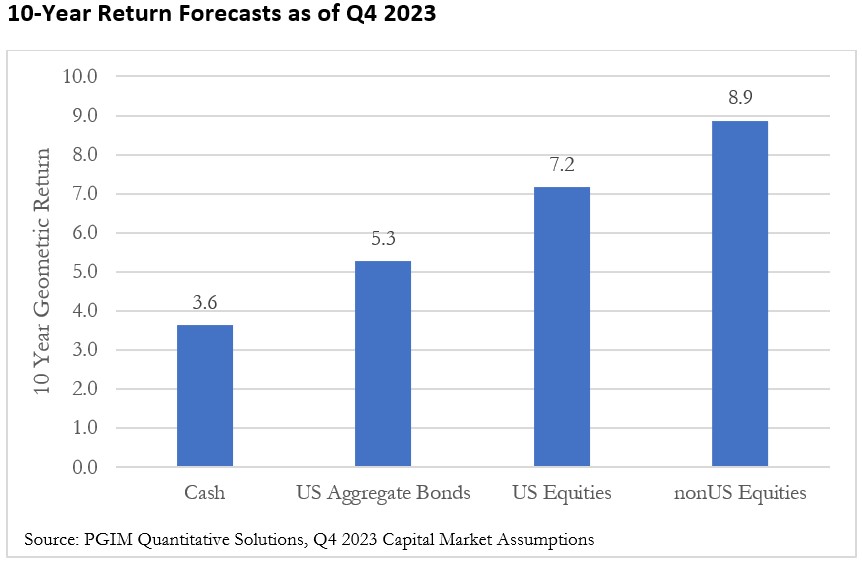
Well, the year 2023 is officially a wrap. Overall market performance was relatively strong, with equities, defined as the total return of the S&P 500, up 26.29% for the year, and bonds, defined as Bloomberg U.S. Aggregate Bond Index, up 5.53%.
The strong performance of equities in 2023 was somewhat unexpected, with many market forecasters predicting lower returns at the beginning of the year, especially with growing concerns of a recession. The stock market return for 2024 is equally uncertain, and many investors may be looking to cash, given attractive yields exceeding 5%; however, it’s important to remember that equities have dramatically outperformed cash historically, especially over longer investment periods, and are expected to do so into the future.
Therefore, the case for equities is as strong today as ever, but it’s important to ensure the risk level of your portfolio is appropriate and to stay invested for the long term!
A look back in time
There has always been risk associated with investing in equities, especially over shorter periods, which is why it’s important to take a long-term perspective when it comes to investing. If we look at total returns for U.S. equities from 1926 to 2023, which include the performance benefit of dividends, they’ve been positive for 73.5% of calendar years with an average annual long-term geometric return of 10.35%, as demonstrated in the chart below.

It’s important to note, though, while the total return on stocks has been positive for 73.5% of calendar years, if we look at five-year periods, it’s been positive 87.2% of the time, and if we look at 10-year periods, it’s been positive 95.5% of the time. In other words, being invested for the long term has definitely benefited investors.
The current high returns on cash, which exceeded 5% at the beginning of the year, may have many investors rethinking their longer-term strategy allocations and possibly underweighting equities in their portfolios. While it’s true that current cash yields are significantly higher than long-term averages, equities have dramatically outperformed cash over the long term. Looking at returns from 1926 to 2023, equities have outperformed by 6.9% per year on average and had a higher return 67.4% of the time, as demonstrated in the chart below.

Clearly, there have been times when cash has outperformed equities, in particular those years when the return on equities was low or negative, but over the long term, equities have dramatically outperformed cash. For example, stocks outperformed cash 76.6% of the time over rolling five-year periods and 85.4% of the time over rolling 10-year periods. Therefore, it’s important to take a long-term perspective when it comes to investing.
While it obviously is difficult to predict where the market is headed, one of our affiliates, PGIM Quantitative Solutions, does create forward-looking return estimates for the next 10 years. These forecasts can be used to help create expectations for investors around likely future returns. The latest return expectations available, as of Q4 2023, are included below, for a few common asset classes.

Some important things to be aware of with respect to these forecasts. First, there is still the general expectation that stocks will outperform cash and bonds into the future, but at lower levels than have been experienced in the past. Second, the forecasted return for U.S. equities over the next 10 years, at 7.2%, is notably lower than the historical long-term average, at 10.2%. This is more than 3 percentage points lower and important for investors to be aware of when running any kind of financial plan, given the pronounced potential effect.
For example, $1 invested at 7.2% for 10 years would grow to roughly $2 at the end of the period vs $2.66 if invested at 10.2%, which is roughly one-fourth lower.
Going forward
The common expression that past performance is no guarantee of future results is true today more than ever. Since it is impossible to know what’s going to happen in the financial markets, one of the most important things to try to control is investor behavior, by ensuring your portfolio is consistent with your objectives and staying invested for the long term.







